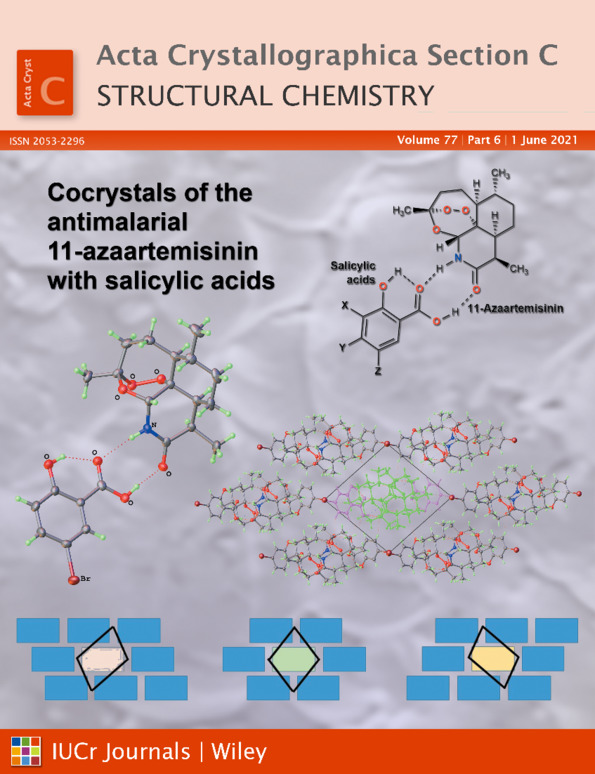Bis(2-nitrophenyl) selenide, bis(2-aminophenyl) selenide and bis(2-aminophenyl) telluride: structural and theoretical analysis
Abstract
Three organoselenium and organotellurium compounds containing ortho substitutents, namely, bis(2-nitrophenyl) selenide, C12H8N2O4Se, 2, bis(2-aminophenyl) selenide, C12H12N2Se, 3, and bis(2-aminophenyl) telluride, C12H12N2Te, 7, have been investigated by both structural and theoretical methods. In the structures of all three compounds, there are intramolecular contacts between both Se and Te with the ortho substituents. In the case of 2, this is achieved by rotation of the nitro group from the arene plane. For 3, both amino groups exhibit pyramidal geometry and are involved in intramolecular N—H…Se interactions, with one also participating in intermolecular N—H…N hydrogen bonding. While 3 and 7 are structurally similar, there are some significant differences. In addition to both intramolecular N—H…Te interactions and intermolecular N—H…N hydrogen bonding, 7 also exhibits intramolecular N—H…N hydrogen bonding. In the packing of these molecules, for 2, there are weak intermolecular C—H…O contacts and these, along with the O…N interactions mentioned above, link the molecules into a three-dimensional array. For 3, in addition to the N—H…N and N—H…Se interactions, there are also weak intermolecular C—H…Se interactions, which also link the molecules into a three-dimensional array. On the other hand, 7 shows intermolecular N—H…N interactions linking the molecules into R22(16) centrosymmetric dimers. In the theoretical studies, for compound 2, AIM (atoms in molecules) analysis revealed critical points in the Se…O interactions with values of 0.017 and 0.026 a.u. These values are suggestive of weak interactions present between Se and O atoms. For 3 and 7, the molecular structures displayed intramolecular, as well as intermolecular, hydrogen-bond interactions of the N—H…N type. The strength of this hydrogen-bond interaction was calculated by AIM analysis. Here, the intermolecular (N—H…N) hydrogen bond is stronger than the intramolecular hydrogen bond. This was confirmed by the electron densities for 3 and 7 [ρ(r) = 0.015 and 0.011, respectively].




